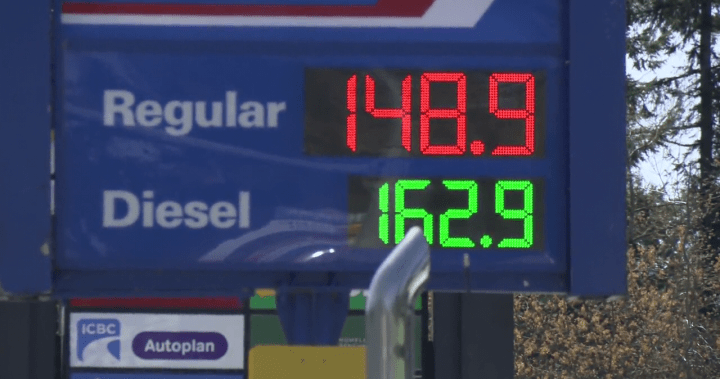Drivers going to fill up their gas tanks within the past week no doubt have noticed a recent spike in prices at pumps across Canada,.
The increase is also being seen globally as the price of oil reacts mainly to the latest developments out of the Middle East. Specifically, escalating tensions between Iran and Israel, with growing concerns it could potentially draw in other nations through diplomacy or even military involvement.
Canada gets a large percentage of its oil, which gets refined into gasoline products, from Middle East sources including Saudi Arabia and other OPEC+ partnerships nations.
“Late last week, as Iran and Israel launched attacks on each other, we saw oil prices shooting up by 10 per cent, and we’re already starting to see that filter down to what Canadians are paying at the pumps,” says petroleum analyst Patrick De Haan at GasBuddy.
“The national average increased about two cents a litre in the last week, and in the Maritimes or the West Coast, increases of three to four cents a litre, with more potentially coming.“
The average price per litre in Canada stands at about $1.36 for regular grade, with Manitoba the lowest average at about $1.28, and the highest is in British Columbia at about $1.55, according to GasBuddy data.
Although rising tensions in the Middle East is the main reason gas prices globally have gone up recently, there are a lot of other factors that go into the price consumers pay at the pumps, and it can be very unpredictable at times.
What else is moving the needle?
The fluctuating price of crude oil is usually a question of supply and demand. In other words, how many barrels of oil are stockpiled globally for shipment compared with how much consumers need, or will need in the near future.
Uncertainty surrounding the global trade war and U.S. President Donald Trump’s tariff policies has also been reflected in prices at gas pumps. This is because oil companies set prices based on what they expect demand to be in the near term.
Get daily National news
Get the day’s top news, political, economic, and current affairs headlines, delivered to your inbox once a day.
Many economists have warned that tariffs could lead to a global recession, and less economic output typically translates into less fuel consumption.
With expectations in the early spring that demand for fuel, and thus crude oil, would decline in the event of an economic downturn, oil companies moved to lower prices.
“When the economy does better, we also consume more oil. Whereas if the economy looks to potentially go into negative growth, we could actually see oil prices declining,” says De Haan.
“The U.S. and its presidential administration has been changing trade policy vigorously. There’s still wide potential for possibilities there, and the one big needle mover has been a shift in policies.”
In early April, Canada’s national average gas price fell to its lowest point of the year so far at just under $1.29, which was right around the time Trump began implementing tariffs on virtually all countries globally.
This was in addition to Prime Minister Mark Carney removing the consumer carbon price, and that lowered gas prices almost overnight at the time.
Another factor which could mean higher gas prices in the near future is the inevitable rise of demand during the summer months.
This means peak demand for fuel used to travel including by car, plane, train, or boat, and by using some recreational vehicles like ATV’s and motorcycles, or even accessories and power tools like chainsaws and leaf blowers and more.
The consistency of peak demand during the summer year after year leads oil companies to get a head start by modifying and boosting production, as well as stockpiling barrels for distribution throughout the summer.
Although this means peak demand and higher gas prices may be just around the corner, that also means prices could slowly come back down after that peak has been reached.
“Over the course of the summer, as supplies of oil build and refiners are done with seasonal maintenance, then transition is done, which slightly reduces gas prices the longer summer continues,” says De Haan.
“So gas prices may return to that normal trend if the situation in the Middle East is starting (to) de-escalate and if there’s not any new noise…things like hurricane season in the U.S. that could affect refining.“
© 2025 Global News, a division of Corus Entertainment Inc.

